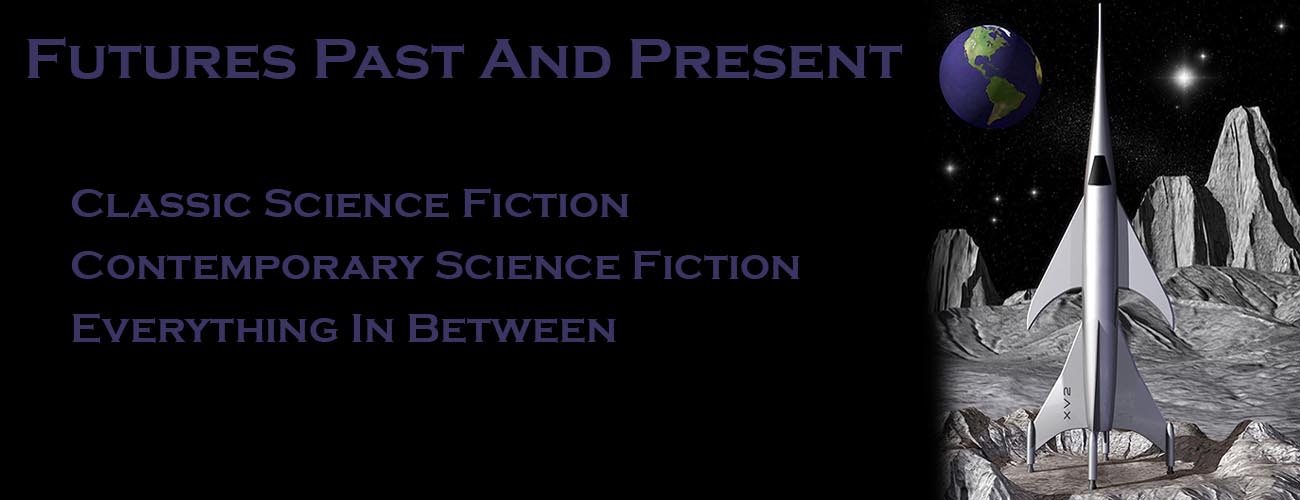With the final mission of the Shuttle ending next week, I thought this would be an appropriate story to write about.
“What’s It Like Out There?” is probably Hamilton’s best known story, certainly his most reprinted, and arguably his best. It concerns an astronaut, Frank Haddon, who has returned from the second Mars expedition and his adjustment back to civilian life on Earth.
A victim of Martian sickness, Haddon had just been released from the hospital in Arizona, where the Mars program is headquartered. Before he goes home, he has to honor some promises to visit the families of some of the men who didn’t come back. As he travels, everyone wants to know what it’s like out there. They usually don’t bother to listen to the reply, or try to tell him how dry/cold/etc. it’s been locally.
The truth is that the whole experience was a living hell. Yet he can’t bring himself to hurt the grieving families and finances with the facts, so he makes things up about how they died. Rather than pain, their passings are peaceful; rather than shot as a muntineer, one’s death is described as an accident.
Instead of the quiet homecoming he’s looking forward to when he finally makes it back home to Ohio, the whole town is waiting to welcome him and talk about what it’s like out there. He wants to lambast them. The Mars expeditions are searching for uranium to power all the luxuries on Earth, and Haddon doesn’t think the cost of cheap energy is worth the lives of good men. He sees the hopeful faces looking up at him and understands why the men who returned from the first expedition didn’t talk about how hard it was. His friends and neighbors needed heroes and they needed something to dream about, a glorious undertaking for all of humanity. So Haddon tells them a whitewashed version of the truth.
For a story published in 1952, “What’s It Like Out There?” holds up remarkably well. The first-person narrative moves at a good pace, and Haddon’s voice is real and believable. The picture of Mars Hamilton paints is one not too far off from the Mars of today. Rather than the canals of Bradbury and the ancient cities of his wife Leigh Brackett, Hamilton’s Mars is dry and cold, windswept and empty. It’s a hostile place. Only the promise of uranium and the plentiful supply of energy is holds entices men to journey there.
Unlike our current space program, the commitment to go to Mars is a real one. The second expedition consists of 20 rockets and hundreds of men. At one point the fourth expedition is mentioned, and it consists of one hundred rockets.
The story ends with Haddon feeling a sense of age from his experience and doubting he will ever feel young again. The story implies he’s in his early 20s. This was pretty grim stuff in 1952, when space travel was usually depicted as being easy. Yet Hamilton didn’t shy away from harsh realities, physical or emotional, in this tale. That’s what gives the story its power. This is the work of a mature writer. Hamilton got better the more he wrote, and he was still writing up until near the end of his life.
As I said earlier, this story holds up better than most from the early 50s. While there’s probably not much uranium on Mars, the ever-growing need for energy is something a contemporary reader will relate to. And while the ubiquitous cell phone technology we enjoy is absent, the story still feels real because it’s not about gadgets. The best science fiction is that which has people at the center. When a story is focused on a gadget or a piece of technology, it’s almost certain that it won’t age well. When the human aspect is the focus, then even if the technology or science becomes a little dated, the story will normally last. If you haven’t read “What’s It Like Out There?”, you should.
Haffner Press is bringing all his short fiction back into print, with the first three volumes available now. Since Hamilton started writing in the 1920s, it will be a while before the series reaches 1952. Your best bet of finding a copy of “What’s It Like Out There?” is the reprint of The Best of Edmond Hamilton.


(*nods*)
What’s more, we can substitute whatever we like for “uranium” to update the science, and the relevance remains. The point is that when there’s something valuable enough, humans will send expeditions to bring it back, even if their technology is just barely able to send them there with enough making it home to carry the valuable cargo.
Hamilton knew his history: he knew what conditions were like on the gold rushes and the voyages of the various East India Companies. Compare with his earlier Conquest of Two Worlds (1932) (which I reviewed here, including a proposed chronology for the story world), which details a similar situation against armed native resistance.
Specifically, he knew that we regard such adventures as glorious in the light of nostalgia, where we might find in them mostly terrible suffering if we had to endure them — and the same goes for such adventures when they happen in the future. That’s the point he makes, and makes effectively, in both stories.
You raise some excellent points, Jordan. Thanks for posting. I read Conquest of Two Worlds years ago when I was in Jr. High. I need to reread it. You’re right about Hamilton’s point, and it’s a valid one. An adventure is someone else having a hard time far away. As much as I love adventure stories, I don’t know that I would want to live many of them.